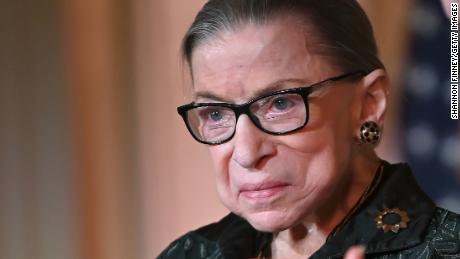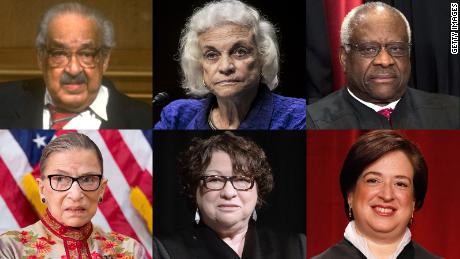The nomination of Amy Coney Barrett to the Supreme Court could wind back the law in America for decades, in some cases to the 1930s
This is not a simple matter of just one vote.
For decades, a quartet of liberal justices has sometimes been able to secure — often through tense negotiations — a crucial fifth vote from the conservative wing. That has meant even though America’s highest bench was shifting rightward, it preserved abortion rights and narrowly declared a right to same-sex marriage.
A tenuous moderation also prevented the five-justice conservative bloc from routinely reversing acts of Congress and eviscerating regulation, for example, over the environment, labor and public safety. Such regulatory authority dates to Franklin D. Roosevelt’s New Deal era, and much has been the bane of the Trump administration, its top officials and its judicial appointees.
The new 6-3 lopsidedness will make consensus at the middle difficult and certainly challenge the leadership of Chief Justice John Roberts, who has sought to project an ideological steadiness and non-political taint.
“But in the areas of voting rights and race, and gun regulation,” Bartlett said, “I expect retrenchment.”
Religious conservatives have been promoting the appointment of Barrett because of her positions on faith and the law.
Law professors who have long studied the Supreme Court note that today’s conservative justices have obliged religious interests more than conservatives of a prior era. In recent cases, the Roberts court has allowed greater public funding of religious education and sided with employers who have religious objections to the Affordable Care Act’s mandate for birth control coverage.
“Religion is an agenda item for the Roberts Court,” said University of Chicago law professor David Strauss, “in a way that it certainly wasn’t for the Burger Court (1969-1986) and even the Rehnquist Court (1986-2005).”
Trump: ‘Faker’ to history maker
The right-wing revolution has been more than a half century in the making, yet it has been amplified under Trump. He is getting a rare third opportunity in a single term to add a justice to the bench.
In some respects, the current chapter of Supreme Court history began when Chief Justice Earl Warren, the bulwark of individual rights and liberties, retired in 1969. Republican President Richard Nixon replaced him with Warren Burger, a jurist known for his law-and-order conservatism.
Roberts, an appointee of Republican President George W. Bush, succeeded Rehnquist in 2005.
As Trump is proving, Republican presidents have enjoyed good timing for vacancies on their watch. Democratic President Jimmy Carter did not have an opportunity for a single high court appointment during his 1977-1981 tenure.
Of the 18 justices confirmed since 1969, 14 have come from Republican presidents, and only four from Democrats. A few GOP appointees, notably Harry Blackmun and David Souter, in time voted consistently with the liberal wing. But conservatives have dominated. (Senate Republicans in 2016 prevented a vote on Democrat Barack Obama’s nomination of Merrick Garland.)
Today’s conservatives, however, do not entirely resemble those of prior decades, notably in their attitudes toward government authority.
Reining in government power
Trump and his close advisers have been candid about seeking judicial nominees who will restrain regulators. They believe government has grown too big and encroaches on business and individual activities.
With the appointment of Barrett, the Supreme Court appears certain to have a majority, for example, to reverse a nearly century-old doctrine that allows Congress to delegate some of its power to agency discretion.
Noting that the Fair Labor Standards Act was passed in 1938, Ginsburg declared that the majority had undermined worker protections from the New Deal era, “without even acknowledging that it unsettles more than half a century of our precedent.”
The Kavanaugh court?
How far the court will lurch to the right could depend on the vote and leadership of Roberts. Until Ginsburg’s death, he filled the role of swing-vote conservative. In prior decades, that role had been assumed by Lewis Powell (1972-1987), Sandra Day O’Connor (1981-2006) and Anthony Kennedy (1988-2018).
These generally conservative justices moved to the left in enough cases to ensure a moderate middle, for example, on abortion rights and limited university affirmative action. Since Kennedy’s retirement two years ago and the addition of Justice Brett Kavanaugh, Roberts has been the swing vote on the conservative-leaning court.
Based on the records of the current conservatives and Barrett, the ideological center could now be Kavanaugh.
But the ability of Roberts to retain control and keep the court from moving too fast should not be underestimated.
In countless public comments in recent years, he has emphasized the impartiality of the bench. He has often set aside his own conservative instincts to ensure decisions that shielded the integrity of the Supreme Court.
Further, the former appellate litigator is skilled at persuasion. He also has, by virtue of the chief justiceship, the power to assign the court opinion when he is in the majority.
One way or another, Roberts is likely to ensure that he remains largely in the majority, even if it is a solidly conservative majority.
“The Rehnquist Court became the Kennedy Court,” observed Professor Strauss. “Roberts does not want this to become the Kavanaugh Court.”
![]()







